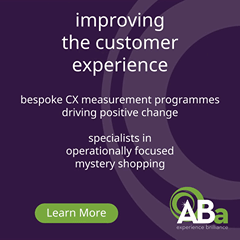Retail Technology Show brings industry together in showcase event
After a three-year hiatus the return of a retail technology show to the UK had been massively anticipated, so there was great expectation heaped on the Retail Technology Show ahead of its opening at Olympia last week.
It did not disappoint and across the two days it welcomed 7,000 registered delegates who were able to visit 200 vendor stands – covering a host of different technology solutions – and hear a three-stream conference programme with 90-plus speakers from retailers, technology firms, and a bit of celebrity glitz too from musician and entrepreneur Tinie Tempah.
Frictionless in-store journeys
Across the exhibition floor and speaker programme some common themes emerged including that of the ongoing seamless merging of technology with the physical store space. This was certainly at the heart of the presentation by Max Gill, Amazon physical retail technologies – Just Walk Out – EMEA lead at Amazon, who told a packed auditorium that consumers are most demanding of convenience in-store and it is at the checkout that it matters most.
To address this issue Amazon has worked hard since 2018 on developing its Just Walk Out solution that removes physical checkouts from within stores. It uses sensors on shelves and camera technology to determine what products have been placed into shoppers’ baskets.
Gill says the cameras can also give insights such as highlighting out-of-stocks, people tracking, and identifying misplaced products. As well as incorporating the JWO solution into Amazon stores the company is also working with other retailers including WH Smith, Starbucks, Sainsbury’s and Hudson Travel to help them deliver a frictionless experience for their shoppers.
Enhancing the in-store experience
Another in-store solution working towards improving the experience for shoppers is Jisp with its Scan & Save solution that uses technology from Scandit. It is being used by retailers including Nisa Retail that has so far rolled it out to 80 stores. Julian Fisher, CEO of Jisp, says the solution enables shoppers to scan product barcodes and receive an augmented reality promotion that involves a voucher sitting in their phone that is scanned at the checkout for a discount to be applied to the shoppers’ bill.
James Taylor, head of central operations at Nisa Retail, says: “We wanted to provide something new for Nisa retailers and shoppers. It was a no-brainer for us. We can create bespoke offers for these independent retailers with deals that don’t contradict their existing promotional plans.”
The system allows for the creation of 150 promotional offers, which are devised at Nisa head office, from which retailers can select any they choose to run. The plan is for the individual retailers to soon be able to create their own promotions.
Fisher adds: “Retailers can deliver a promo direct to a consumer. Brands can do price flexing in real-time and less waste from using PoS materials in-store. The data collected also gives insight into the activities of the consumer in-store.”
Omni-present data
Not surprisingly there was no escaping data across most of the presentations at RTS and on a panel themed ‘Unlocking the Value of Customer Data’ Sezin Turner, head of guest at KFC, highlighted how customer feedback was the main data metric she uses: “Across our 1,000 stores customer feedback is a performance metric and it’s important to capture it across channels. The previous way was to place a link on the customers’ receipt but today they give feedback via Google reviews and on the delivery aggregator platforms.”
Turner revealed KFC is now using artificial intelligence and machine learning to derive detailed customer insight into things like the times of day that drive different satisfaction levels: “We can drill down into the details of products that, say, drove dissatisfaction. In delivery the perception changes – if it is not delivered on time then the perception is that KFC delivered it [and not the delivery aggregators]. The feedback we get is very different across these channels.”
One key area of focus involving data for Robert Bates, head of decision sciences at Currys, is around product ranges online versus those in-store. “We don’t always know much about customers. There’s a lot we can capture in stores. For different demographics it can mean different products in different stores. We also know customers want to touch high-end products [when in-store]. We can look at taking the best [knowledge] from the stores to the web. What are the best attributes to use to measure ranges across stores and online,” he explains.
Moving into the cloud
Being able to store and interrogate the data in a timely manner is of great importance and a key enabler for this is the cloud, according to Alex Ritter, director & head of retail at Google Cloud, who says the pandemic highlighted some of the deficiencies of traditional retailers and the cloud is seen as the solution.
“When the pandemic suddenly stopped store sales then the ability of retailers to be flexible was hugely important. They found their [infrastructure] costs are the same regardless of what is going on in the business. Many retailers are therefore now going to the cloud for this flexibility and the ability to hyper-scale without having to forward invest,” he says, adding that the cloud also enables retailers to understand trends in the supply chain on a daily basis rather than the often traditional monthly basis. Rutter says this is a “massive benefit” to retailers.
The increased adoption of the cloud by retailers represents one way the industry is beginning to work in very different ways compared with the past. For Richard Surman, head of IT at Crew Clothing Company, this involves the adoption of a more modular approach to technology implementation. Rather than run everything from a core ERP system he is taking the route of utilising different technology solutions and integrating them.
Agility and modularity
This began with the company linking up with PMC Retail to implement a mobile payments solution for its summer events programme. So successful was the approach that the solution has since been rolled-out across the Crew estate of stores. The two companies are now working together on various projects including one that will see clientelling functionality introduced to the Android tablets.
Elliott Winskill, head of solutions at PMC Retail, says: “Retailers are now going modular as the industry is moving so fast. The challenge is for them to keep their agility while not missing delivery of their [underlying] roadmaps and also bespoke elements.”
Operating in a more agile way is certainly recognised by Marni Allen, director of consumer healthcare futures at Walgreens Boots Alliance, who was brought into the company to bring about change and to drive innovation: “We’re not set up to be the agile start-up factory that we want to be.”
In addressing this issue she says it is not just about the technology but about cultures. It requires being “fearless and putting yourself out on a limb,” says Allen, adding: “It takes courage. I’m not here to tell them what they want to hear, I’m here to tell them what to do. It’s to challenge the status quo. It’s about establishing a culture of innovation.”
Words by Glynn Davis














